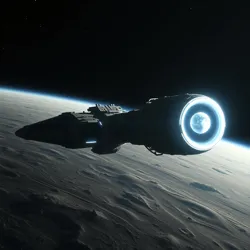Oort Cloud Expedition
The Oort Cloud Expedition represents humanity's most ambitious deep space exploration mission to date, launched in 2198 as a joint venture between the Interstellar Scientific Consortium and the Deep Space Mining Corporation. This ongoing mission aims to establish the first permanent research outpost at the edge of our solar system.
 The ISS Horizon during its final construction phase in lunar orbit
The ISS Horizon during its final construction phase in lunar orbitMission Overview
The primary vessel, the ISS Horizon, carries a crew of 75 specialists selected through the rigorous Deep Space Aptitude Program. The ship utilizes revolutionary Quantum Fold Drive technology, allowing it to traverse the vast distances to the Oort Cloud within a manageable timeframe of 3.5 years.
Key Objectives
-
Establishment of Station Aurora, the first permanent research facility in the Oort Cloud
-
Collection and analysis of pristine cometary material
-
Investigation of theoretical Dark Matter Concentrations believed to exist in the region
Technical Innovations
The expedition required several breakthrough technologies, including the development of the Neural Sleep Chambers for long-duration crew stasis and the revolutionary Quantum Communication Array for maintaining contact with Earth despite the extreme distances involved.
 Computer rendering of Station Aurora's planned configuration
Computer rendering of Station Aurora's planned configurationScientific Significance
The mission represents the first opportunity to study the Oort Cloud Anomalies discovered by the Helios Deep Space Network in 2189. These unexplained phenomena have led some scientists to propose the existence of previously unknown forms of matter unique to this region of space.
Research Priorities
-
Investigation of primitive solar system materials
-
Study of long-term human adaptation to extreme deep space conditions
-
Testing of experimental Gravity Wave Navigation systems
Challenges and Controversies
The expedition has faced criticism from the Space Resource Conservation Council regarding its unprecedented cost and the potential risks to the crew. The tragic loss of the support vessel ISS Pathfinder during preliminary scouting missions highlighted the dangers of operating at such extreme distances from Earth.
 The Pathfinder Memorial at the International Space Center
The Pathfinder Memorial at the International Space CenterSee Also
- Deep Space Colonization Initiative
- Quantum Fold Technology
- Extreme Distance Navigation
- Solar System Boundary Studies
References
- Deep Space Expedition Records
- Oort Cloud Research Quarterly
- Journal of Quantum Space Technology